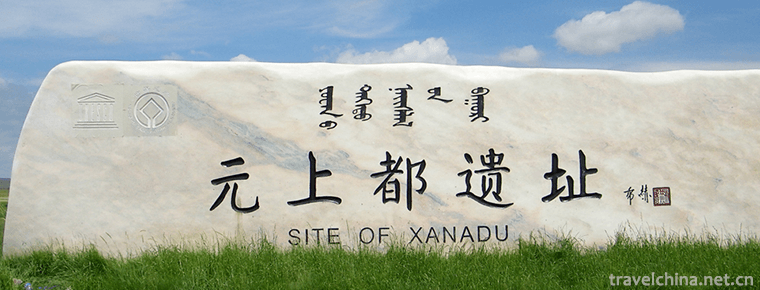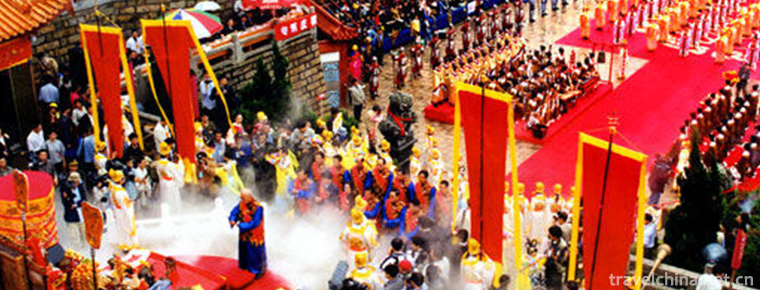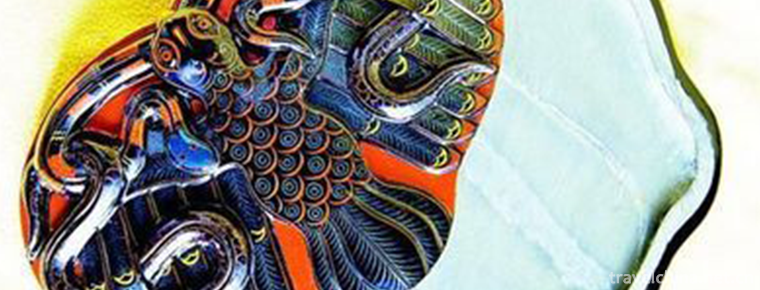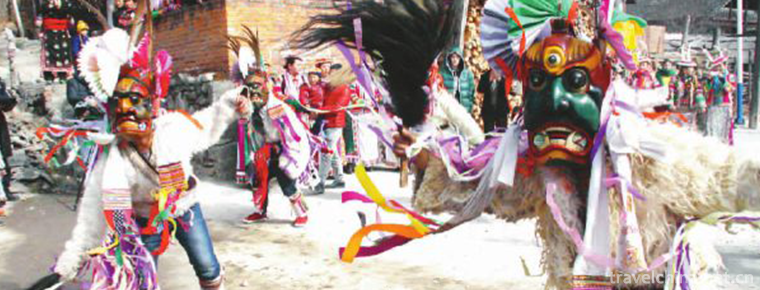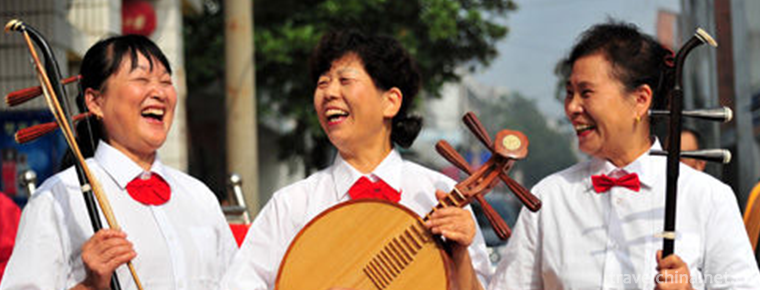Hengshui painting
Hengshui painting
Hengshui Inner Painting, a traditional folk art in Hengshui, Hebei Province, is one of the national intangible cultural heritage.
Hengshui interior painting is a kind of snuff bottle interior wall painting technique, which is a unique folk craft in China. It mainly distributes in Hengshui City of Hebei Province and its surrounding areas. Hengshui Inner Painting introduces the techniques of chafing, rubbing, dyeing, dotting, hooking and tearing into the inner painting. Hengshui Inner Painting has profound intention, rigorous composition, abundant line drawing techniques, coordinated and refined color design, rich calligraphy and painting, elegant and popular appreciation, which is deeply valued by the world. His works are bold and unrestrained, full of poetic and picturesque flavor, light-colored portraits, distinct layers, rich in texture.
On May 20, 2006, Hengshui Inner Painting was approved by the State Council of the People's Republic of China to be included in the first batch of national intangible cultural heritage list with the heritage number_-15.
Historical origin
Internal painting is a unique traditional craft in China. It has a deep historical origin with snuff and snuff bottle. Snuff is a kind of tobacco fine foam mixed with vanilla and spice flower dew to develop a yellow powder with the effect of "eliminating cold and preventing epidemic". During the Wanli period of the Ming Dynasty, Italian missionary Matteo Ricci introduced it to China as a tribute. By the Qing Dynasty, this kind of palace articles had been introduced into the folk, and the custom of "handing cigarette pots to everyone" appeared. People liked snuff and "envied collecting utensils". This custom promoted the production of snuff pots to be more and more sophisticated.
In 1696, Emperor Kangxi, who had excellent snuff, set up the first glass factory in China, specializing in making snuff bottles and awarding them to the Minister of Construction and foreign envoys. The snuff bottle has become one of the symbols for the eight banners'children to boast their status and identity. During the reign of Qianlong, the production of snuff bottles developed from materials (glass) and porcelain to ivory, amber, coral, agate, crystal, bamboo root and so on. In the year of Xianfeng, "Snuff Song" wrote that "Phoenix Luan Crane and Sparrow, Kirin Lion and Dragon Fish. Xianshan Pavilion is full of smoke and shush, spring rocks and plants, wood frogs and grasshoppers. The material of snuff bottle covers six categories: metal, jade, stone, pottery, material ware and organic matter. The process includes traditional writing, painting, carving, carving, carving, stencil, firing, welding, chisel, grinding, inlaying, casting, error, sticking, lacquer and moulding technology. Snuff bottle has become the epitome of the Qing Dynasty's arts and crafts and is called "collection" by later generations. China's pocket artworks of various arts and crafts are well known all over the world.
In the late Qianlong period, the snuff bottle with inner painting was born. The interior painting makes the snuff bottle craft reach the artistic effect of "a thousand miles in an inch" and makes the snuff bottle craft reach the exquisite level. It is called "incredible, ghostly axe and supernatural workmanship" art in the world. In 1968, collectors from all over the world established the International Chinese Snuff Bottle Society. Experts divide the art of Chinese interior painting into four schools: Beijing, Hebei, Shandong and Guangdong.
The Beijing School originated in the Qianlong period, and many outstanding interior painters emerged, such as Ma Shaoxuan, Sun Xingwu and Ye Zhongsan, who were good at figures in the late Qing Dynasty and the early years of the Republic, and Zhou Leyuan, Bian Zhong and Ziyizi, who were good at painting landscapes, flowers and birds. Liu Shouben is the representative of modern Beijing School. The Beijing School maintained the traditional techniques and painting style of the "Ye School", and painted with bamboo and willow hook brushes. The style of painting was simple, vigorous, elegant and gorgeous, and the coloring was full and mellow.
During the Guangxu period, Bi Rongjiu, an old Shandong artist, brought the art of interior painting back to Boshan. After nearly a hundred years of development, the "Lu School" was formed. The school not only improved the dyestuffs of interior painting, but also reformed the tools of interior painting. It painted with bamboo and willow brushes, forming the features of Lu school with rich pictures, fine lines and flowing elegance.
"Cantonese Painting" is also known as "Taojiang Painting". It was founded by Wu Songling, an old artist in the late period of the Cultural Revolution. Cantonese cigarette pots are light and elegant. The pot body is decorated with golden patterns. They are brilliant and unique in style.
Wang Xisan, the founder of inner painting of Ji School, is the first disciple of Ye Xiaofeng and Ye Fengqi, the cotyledons of Ye Zhongsan, the old artist of Beijing School. In the late 1950s, Wang Xisan mastered the techniques of "Ye School" painting, and introduced cats into snuff bottles. He used fine brushwork "tearing hair" to draw the cat's eyes and the fluffy texture of cats, which solved the problem of freehand brushwork painting of cats, rigid image and lack of authenticity. And created a special tool of Hengshui inner painting, metal rod hook brush, that is, "learn three curves hook brush", the pen rod straight bend, can change direction at will.
Foreign expert Bob Stevens said that "the cat look he painted was so lively that it seemed that he was about to jump out of the pot." In 1966, Wang Xisan was repatriated to Fucheng County, Hebei Province, in the campaign of "sweeping the Four Old Ages" during the Cultural Revolution. He was in adversity and had several ups and downs, but pursued artistic progress relentlessly with tenacious perseverance. In Yangzhuang Village, Fucheng County, he started internal painting in the form of sideline brushwork, laying a solid foundation for the creation of "Ji School" internal painting, and received four batches of apprentices successively. Dozens of novices in interior painting have developed Hengshui interior painting into a "modern most powerful" school.
In 1968, collectors from all over the world established the International Chinese Snuff Bottle Society. Experts divide the art of Chinese interior painting into four schools: Beijing, Hebei, Shandong and Guangdong. Among them, "Ji School" interior painting originated in Hengshui, because Hengshui interior painting art is unique, it was named "the hometown of Chinese interior painting art" by the Ministry of Culture.
Inheritance and protection
Inheritance value
In the 1960s, he returned to his hometown of Hengshui Fucheng from the old Beijing artists Ye Xiaofeng and Ye Qi's Wang Xisan, and began to train disciples to develop Hengshui inner painting. There are many new artists in the hometown of interior painting, such as Zhang Rucai, Fu Guoshun, Wang Chunguang, Jia Jianming, Wang Hongmin, Li Xiuchun, young and middle-aged artists such as simple and elegant, novel landscape figures, Gao Zhenyong, who have brought Hengshui interior painting, a folk art, to the world stage and won the reputation of "excellent Chinese art" and "national treasure".
Hengshui interior painting is the representative of modern Chinese interior painting. There are plenty of talented people in the industry. There are more than ten first-class artists with their own expertise. Their works are bold and unrestrained, with exquisite brush and ink and rich poetry.
Inheritance status
Hengshui Inner Painting is only inherited by Wang Xisan's master and apprentice. Besides, there are no systematic written records or writings. If we do not formulate specific protective measures to strengthen management, this characteristic skill will be difficult to continue.
Inheriting characters
Wang Xisan, male, Han nationality, born in Fucheng, Hebei Province in 1938. The first batch of state-level intangible cultural heritage projects, Hengshui Inner Painting representative successor, master of Chinese arts and crafts.
protective measures
Inheritance figure group photo (41)
In December 1993, Hengshui City was named "Township of Chinese Internal Painting Art" in the activities of "Township of Chinese Folk Art" named by the Ministry of Culture.
In February 2003, the exhibition hall of the hometown of Chinese interior painting art, founded by Wang Xi, was put into use. It was the first museum specializing in interior painting art in the world at that time.
social influence
Honorary commendation
On December 22, 2006, Xisan Painting Pot was certified by UNESCO as an outstanding handicraft badge.
social activities
In February 2019, the cultural activities of Hengshui Spring Festival were opened, and the non-legacy items such as Hengshui inner painting, Taocheng FA Tie rubbing, Houdian brush making, Hengshui old and white dry traditional brewing, Wuqiang New Year painting, foot stamping and paper-cutting were exhibited and displayed.


-
Wanfeng Forest Scenic Area
Wanfeng Forest Scenic Area, located in the southeast of Xingyi City, Guizhou Province, is the largest and most typical karst peak forest in China, with its magnificent momentum, peculiar shape and bea.
Views: 163 Time 2018-12-17 -
Old Stork River Drifting
Xixia Guanhe Drifting Scenic Area is a national AAAA-level tourist attraction and a part of Funiushan World Geopark in Nanyang, China. Xixia County, Nanyang City.
Views: 111 Time 2019-01-29 -
Mazu memorial ceremony
Mazu Festival, which originated in Song Dynasty, experienced Yuan, Ming and Qing dynasties and continued to expand and enrich. By the Qing Dynasty, Mazu was named "Tianhou", and the title re.
Views: 204 Time 2019-05-15 -
Lacquerware Decoration Techniques
Chu-style lacquerware decoration is a traditional folk lacquerware decoration technique. By the Spring and Autumn Period and the Warring States Period, the production technology .
Views: 93 Time 2019-06-10 -
Cross stitch
Flower picking, a kind of drawing work, also refers to a needle method of embroidery, Chinese folk traditional handicraft. Also known as "pick weave", "cross embroidery", "cro.
Views: 229 Time 2019-06-21 -
Jumping Cao Gai
Caogai jumping is prevalent in Baima Tibetan area of Pingwu and Nanping counties. It is held on the sixth day of the first month of the lunar calendar every year. Cao Gai is a Baima Tibetan phonetic t.
Views: 100 Time 2019-06-21 -
Xinjiang Uygur Mukam Art
Xinjiang Uygur Mukam Art is a large-scale integrated classical music art form which integrates singing, dancing and music. It is the general name of "Twelve Mukam" and "Daolang Mukam&qu.
Views: 126 Time 2019-07-06 -
Silk Bamboo in Yichang
Yichang silk bamboo, also known as "fine music", is the representative genre of folk instrumental music art in Yichang. It is mainly popular in Yaqueling and Longquan of Yiling District, and.
Views: 138 Time 2019-07-12 -
Music that Ding Zhen likes
Zhaxi Dingzhen (Chinese Name: Ding Zhen), Tibetan, lives in Litang County, Ganzi Prefecture, Sichuan Province..
Views: 143 Time 2020-12-07 -
Contact information of Chengdu Giant Panda Base
Contact information of Chengdu Giant Panda Base.
Views: 160 Time 2020-12-13 -
Land resources in Suining
The total cultivated land area of Suining is 2.2815 million mu, of which the purple soil area is the largest, accounting for 62% of the cultivated land area, which is widely distributed in the low mountain and hilly areas..
Views: 337 Time 2020-12-16

